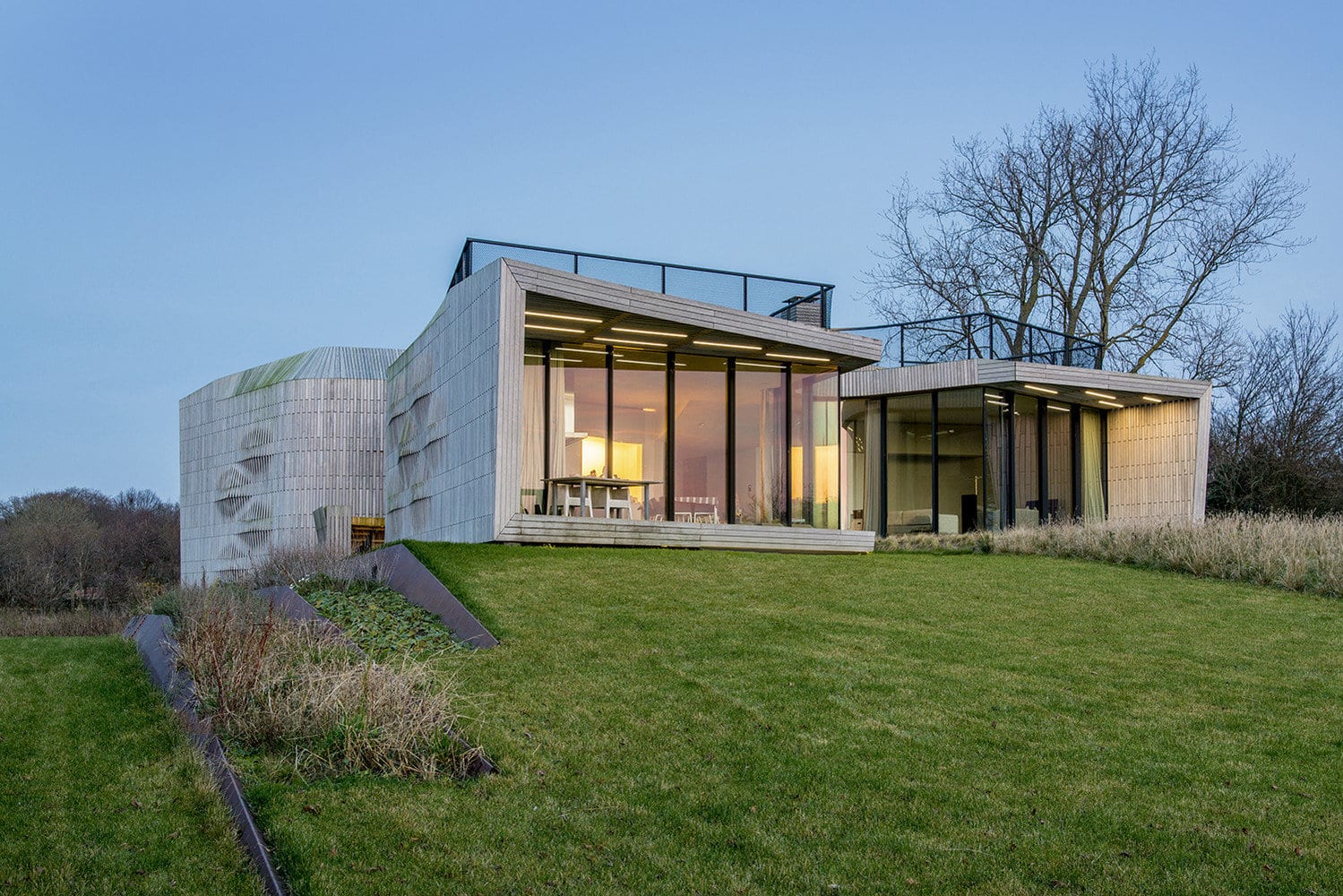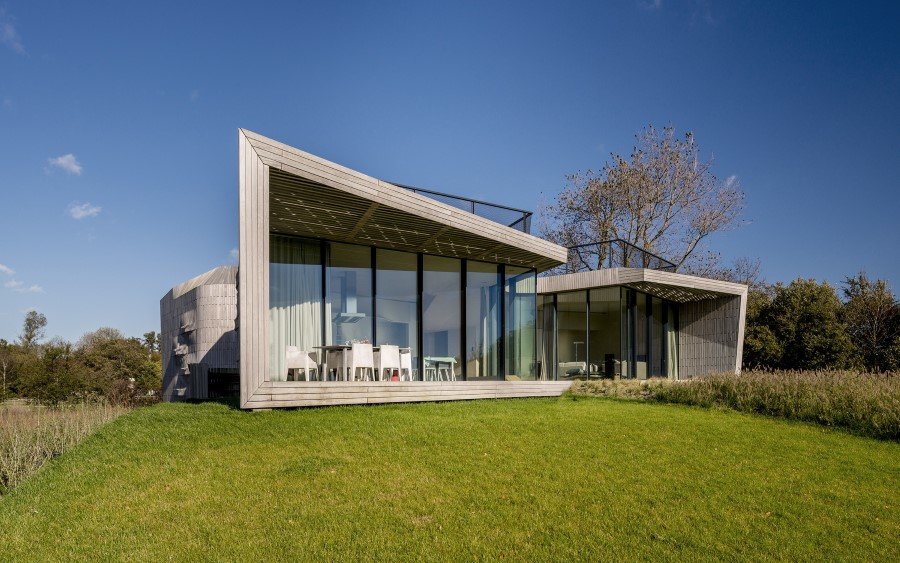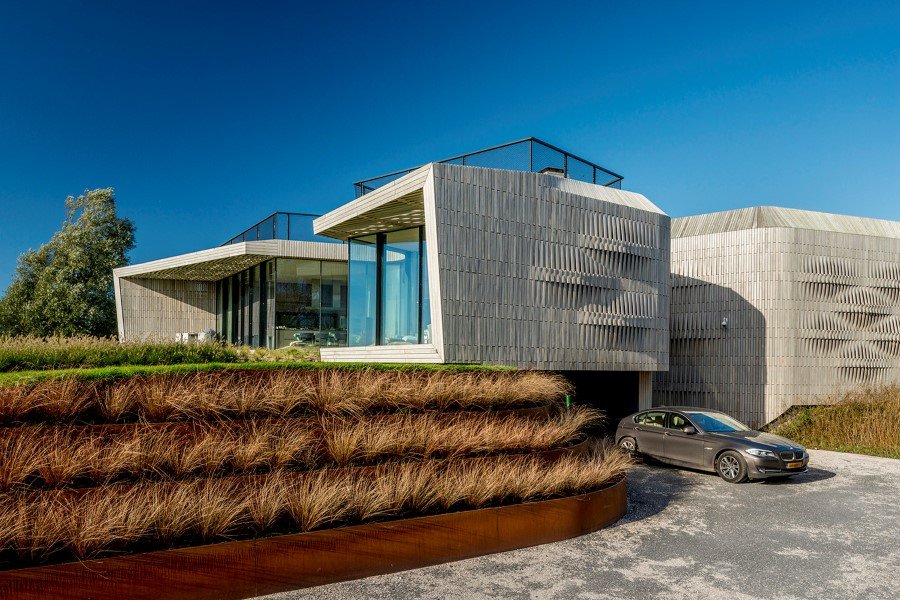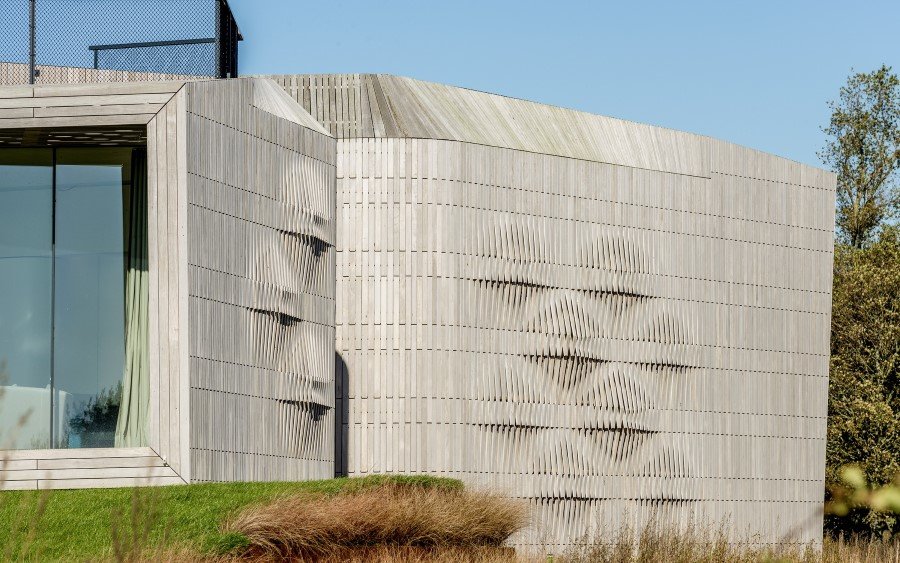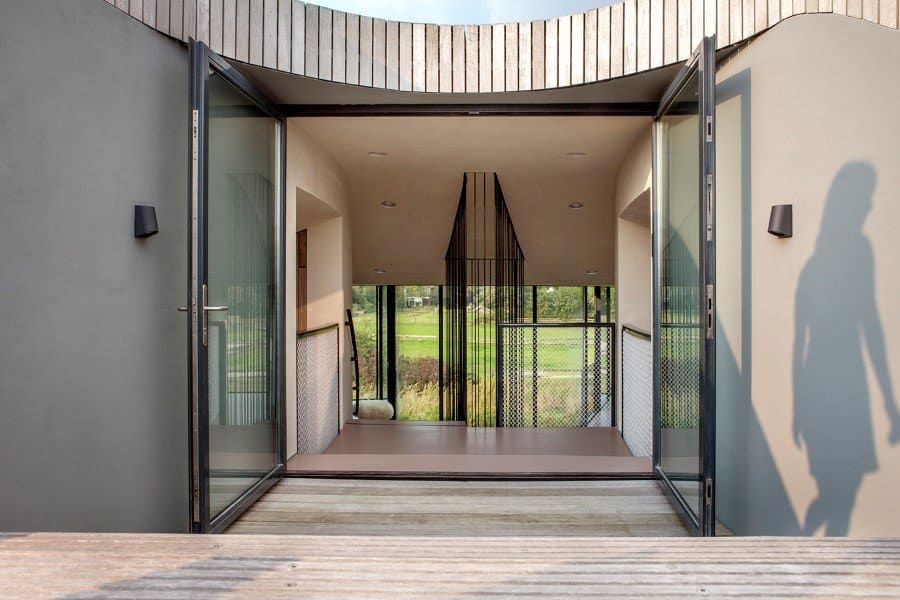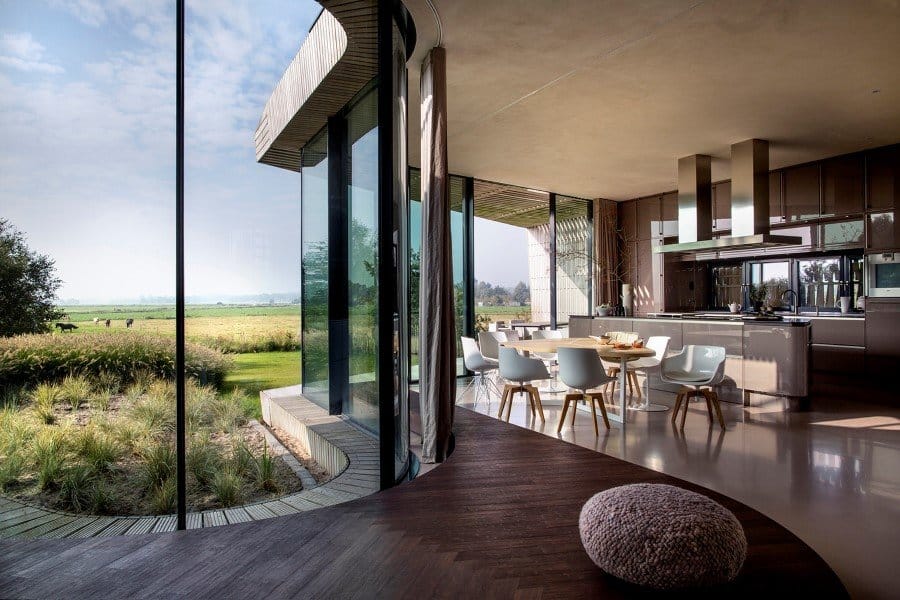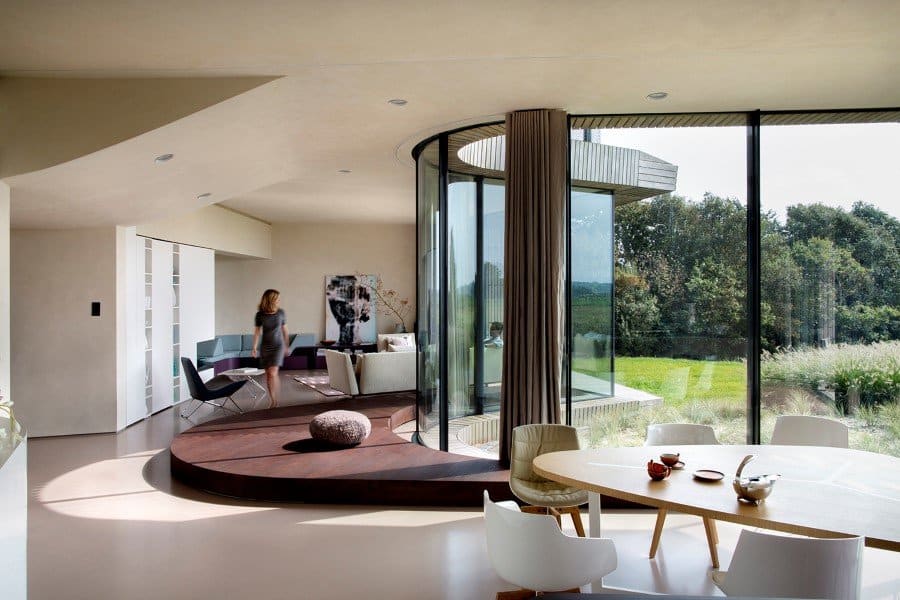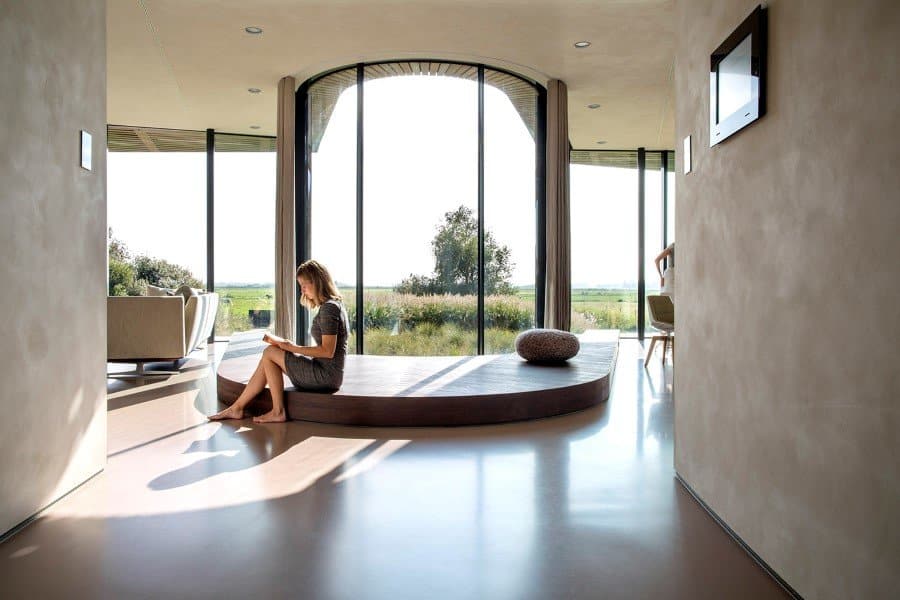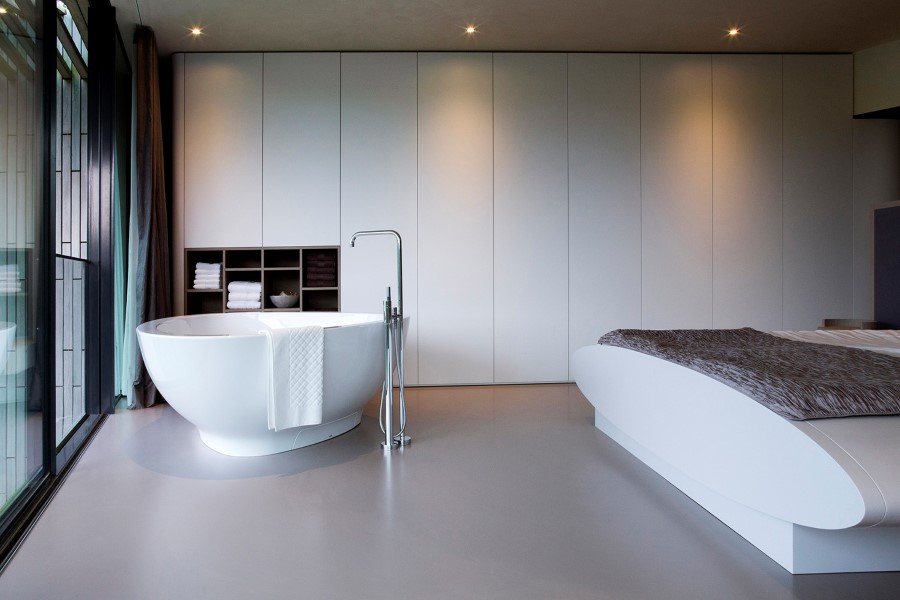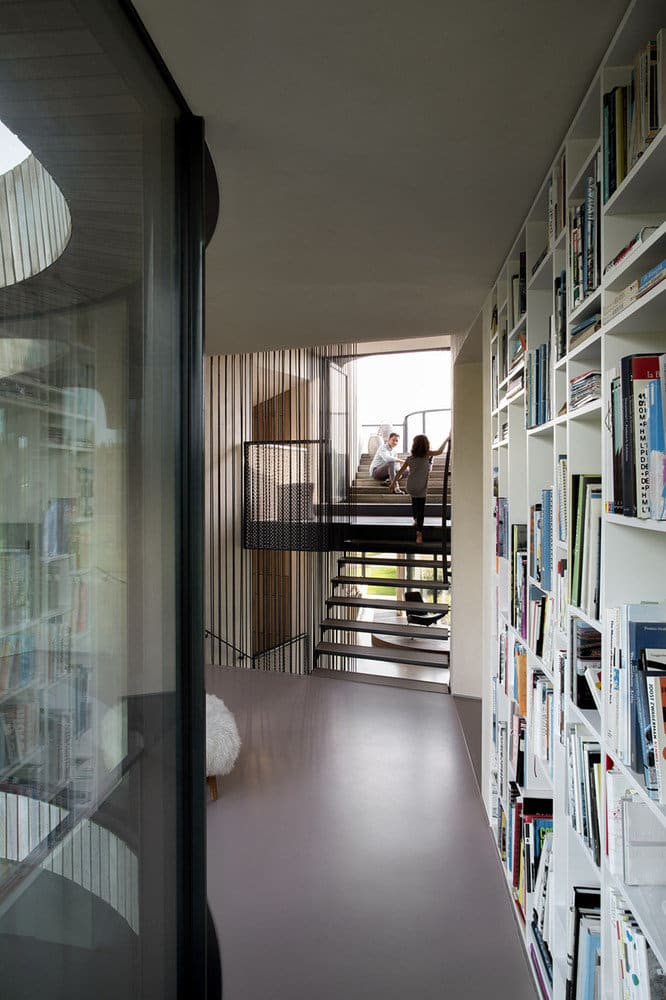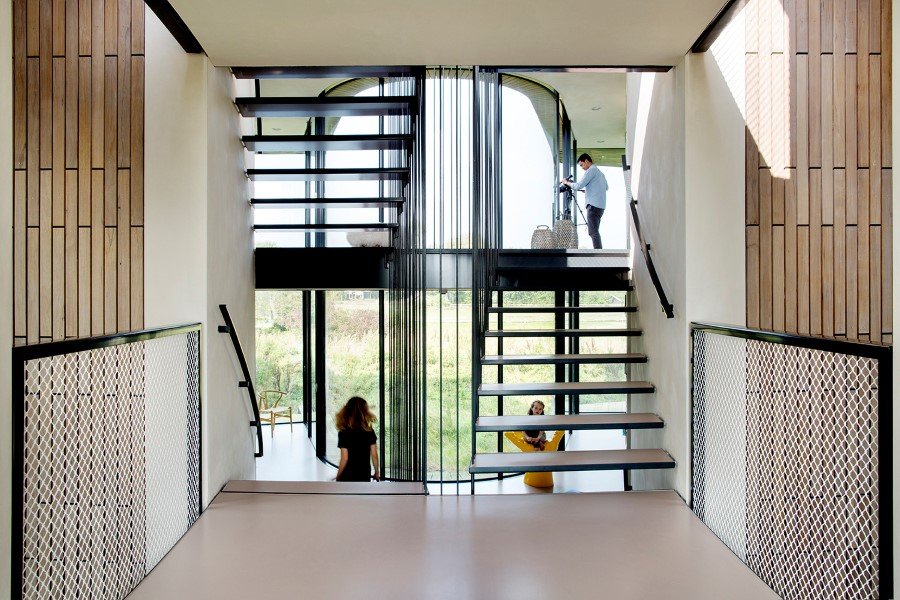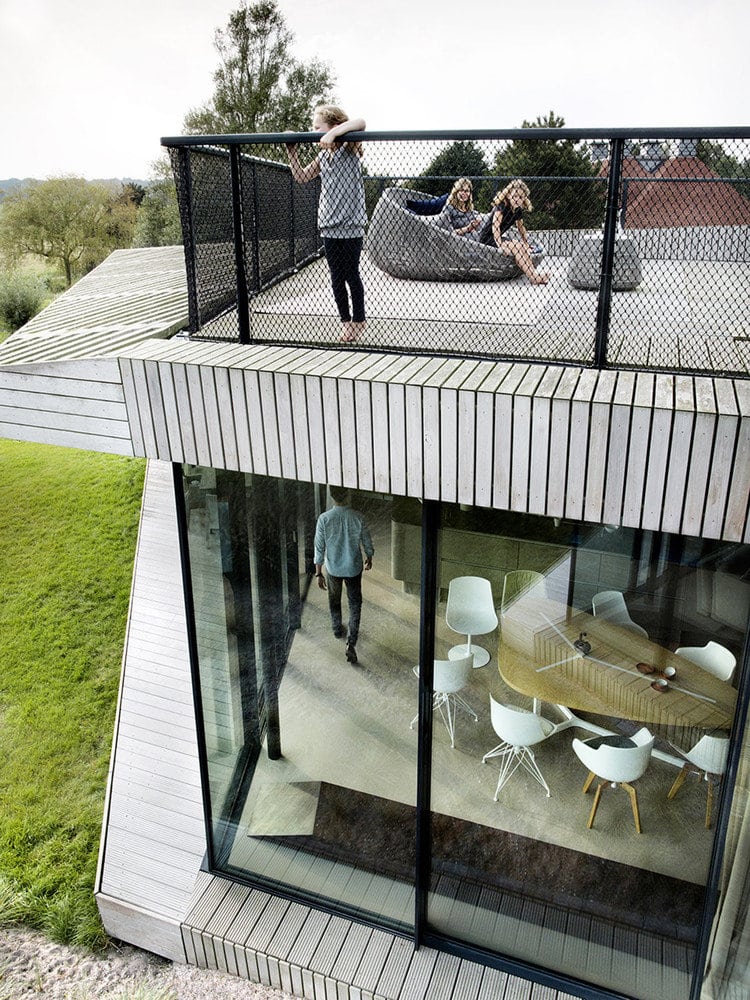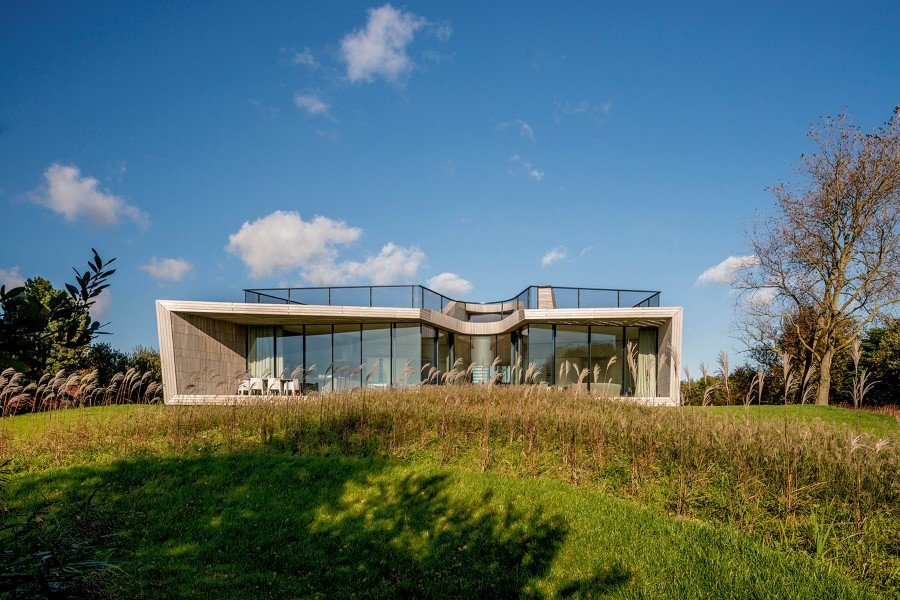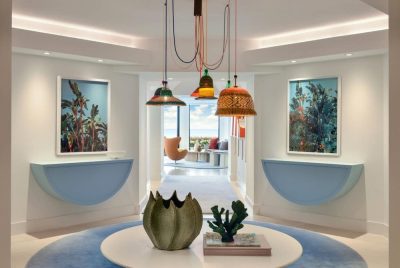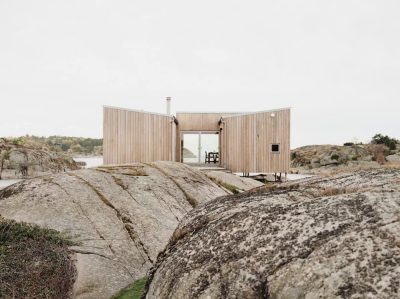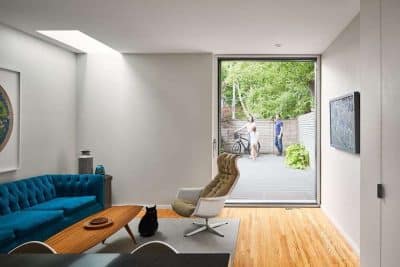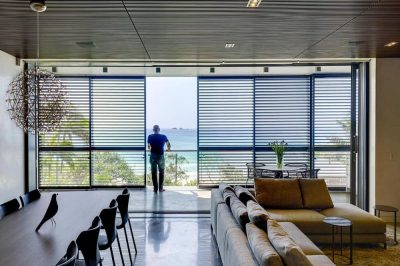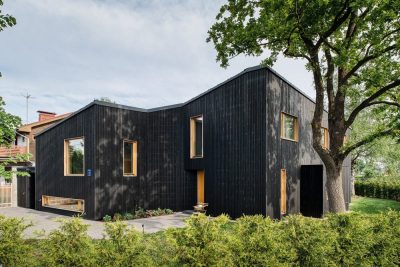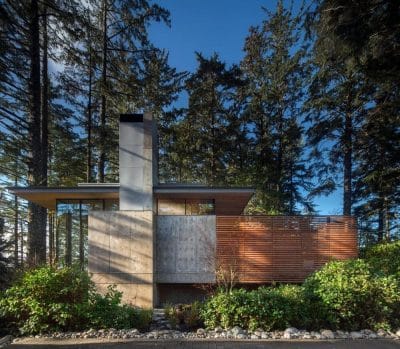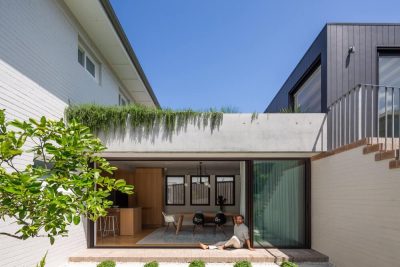Project: Contemporary Smart Home
Location: Noord-Holland, The Netherlands
Building surface gross: 528 m²
Building surface net: 406 m²
Photos: Interior: ©Inga Powilleit. Exterior: ©Fedde de Weert
Furniture & accessories: supplied by Co van der Horst, Amstelveen
UNStudio: Ben van Berkel, Caroline Bos, Astrid Piber with Ger Gijzen, René Wysk and Luis Etchegorry, William de Boer, Elisabeth Brauner, Albert Gnodde, Cheng Gong, Eelco Grootjes, Daniela Hake, Patrik Noome, Kristin Sandner, Beatriz Zorzo Talavera
W.I.N.D. House is a contemporary smart home designed by Amsterdam-based UNStudio.
Description by UNStudio: The W.I.N.D. House in the north of Holland incorporates both integrated sustainable solutions and home automation, whilst enabling a flexible use of space. Located on the outskirts of a Dutch village and close to the sea, the house is backed by a wooded area and fronted by an open expanse of polder landscape. The design of the house responds to both its setting and to the seasons. The more intimate working and sleeping areas are located towards the back, where the enclosure of the woods provides an intimate setting, while the living areas enjoy panoramic views of the polder landscape to the front.
